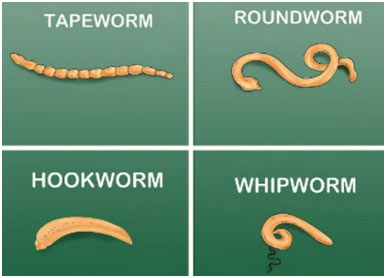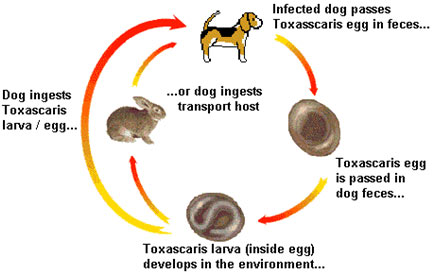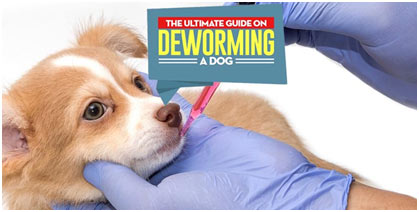Worms in Dogs
The idea of worms in our pet dogs is constantly unpleasant. No one wishes to consider creepy crawlies infesting their pet’s internal organs. But comprehending the threats, symptoms, and treatment options for worms in canines is a fundamental part of accountable pet dog ownership. There are 5 main types of worms that typically affect domestic dogs: roundworms, tapeworms, hookworms, whipworms, and heartworms.
Roundworms
Roundworms are a few of the most typical digestive tract worms in pets There are two kinds of roundworms in dogs: Toxocara canis (T. canis) and Toxascaris leonina. T. canis is more common in young puppies and can also be transmitted to human beings.
Roundworm larvae will at first infect a pet’s digestive system but can burrow their way into other bodily tissues and organs. As Toxocara canis larvae develop, they will move onto the lungs to develop and after that then approximately the airway prior to being spent and swallowed again, re-entering the intestinal tract to finish their lifecycle. Toxascaris leonina does stagnate around the body and has a far easier lifecycle.

Tapeworm
Tapeworms reside in the small intestine, grabbing onto its wall with six small rows of teeth to absorb nutrients as food is digested. They are long– half a foot or more in length– and flat in look. Unless the dog is incredibly active, the parasite does not harm the pet, as there are a lot of nutrients to serve both the host and tapeworm. When excreted, the worm generally splits into sections that appear like little grains of rice.
Hookworms
Hookworms are more common in dogs than in cats. They fasten to the wall of the small intestine and suck blood, and they are a danger to dogs. Hookworms are small, thin worms with hook-like mouthparts that they use to attach to the digestive wall. Adult canines get hookworms from contact with the larvae in stool-contaminated soil (the larvae can burrow through the skin) or from ingesting larvae from the environment or in a prey animal’s tissues.
Whipworms
Whipworms are a kind of worm in pets that lives in the cecum (the start of the large intestinal tract) and colon, where they pass their eggs into the dogs’ feces. Dogs get whipworms from consuming an infested compound, which can include soil, food, water, feces, or animal flesh. Whipworms do not always trigger signs in moderate cases. But in serious cases, they can result in swelling, weight reduction, diarrhea, and sometimes anemia.
Heartworms
Of all of the kinds of worms in dogs, the most worrisome– and the most avoidable– are heartworms. Mosquitoes transmit the parasite, and since avoiding mosquitoes is nearly difficult in a lot of places, veterinarians advise routine heartworm preventatives to keep your dog safe. Heartworms grow and increase within the heart, causing severe lung illness, cardiac arrest, and other organ damage, and eventually causing death if left without treatment.
Lungworms
This worm (Angiostrongylus vasorum) is a bit different; it resides in the canine’s capillary and impacts its lungs. Dogs can pick up this worm by consuming slugs and snails.

How dogs get worms?
- Both roundworms and hookworms can permeate the uterus and can therefore be transmitted to be-born pups, along with to young puppies through their mother’s milk. This is an extremely common route of infection for roundworms therefore it’s very essential to ask your veterinarian’s advice about worming pups.

- Another significant source of infection of roundworms, hookworms, and whipworms for pets is through infected soil because the parasites reside in the gut and shed eggs in the faeces. Dogs usually end up being contaminated while grooming themselves and consuming polluted dirt in their fur. It is therefore vital that pet dog owners always clean up their animals.
- Tapeworms are the only digestive parasite that can be passed on through infected fleas and cannot be contracted in any other way. A dog will just be contaminated if it consumes a flea carrying tapeworm eggs.
Signs of Dogs with Worms
While each parasite impacts canines differently, there are some basic warning symptoms that dog owners need to know. Intestinal tract worms might trigger:
- Diarrhea
- Stomach discomfort
- Weight reduction
- Throwing up
- Poor coat look
- Pot-bellied appearance
- Lethargy
- Dehydration
- Shortages in nutrition and anemia
- Digestive tract blockage or pneumonia
- Blood in the stool (either bright red or darker purple).
Heartworms can likewise be accompanied by respiratory signs such as coughing, workout intolerance, weak pulse, weight loss, abdominal distension, and in extreme cases, labored breathing, pale gums, and death.

Treatment and Prevention
- It is important that you provide your pet dog with regular deworming treatment, particularly if you have children. Pups are especially high threat as they can have high levels of infection.
- Constantly consult your vet on the best treatment for your dog. There are numerous types of deworming medication readily available that prevent and treat some or all kinds of digestive parasites together. These can be administered by injection, tablet, or through spot-on treatments.
- A single treatment frequently won’t eliminate all worms in your family pet’s body. In cases of Toxocara canis roundworms and hookworms, fresh larvae can enter the intestinal tract after deworming– so repeat treatment will be necessary to treat the infection.
FAQs – Worms in Dogs
1. What are the main types of worms that affect dogs?
- The five main types of worms that commonly affect domestic dogs are roundworms, tapeworms, hookworms, whipworms, and heartworms.
2. How do roundworms develop in a dog’s body?
- Roundworm larvae initially infect a dog’s digestive system but can migrate to other bodily tissues and organs. The lifecycle involves movement to the lungs and airway before being swallowed again, completing the cycle.
3. What does tapeworm infestation in dogs look like?
- Tapeworms reside in the small intestine, attaching with teeth rows. When excreted, the worm breaks into rice-like segments. It usually does not harm the dog unless very active.
4. How do dogs get hookworms, and what risks do they pose?
- Hookworms attach to the small intestine, sucking blood. Dogs get infected through contact with larvae in stool-contaminated soil or by ingesting larvae. Hookworms pose a serious threat to dogs due to blood-sucking.
5. What is the source of whipworm infection in dogs?
- Dogs get whipworms from consuming an infested substance, which can include soil, food, water, feces, or animal flesh. In severe cases, whipworms can cause inflammation, weight loss, diarrhea, and anemia.
6. How are heartworms transmitted to dogs, and what damage do they cause?
- Heartworms are transmitted by mosquitoes, and prevention is crucial. Heartworms grow in the heart, causing severe lung disease, heart failure, organ damage, and, if untreated, death.
7. Can dogs get lungworms, and how is this different from other worms?
- Dogs can acquire lungworms by consuming slugs and snails. This worm resides in the dog’s blood vessels and affects the lungs.
8. How do dogs typically get infected with worms?
- Dogs can get worms through various routes, including transmission from mother to pups, contaminated soil, and ingestion of infected fleas or substances. Regular deworming is essential.
9. What are the signs that a dog has worms?
- Symptoms of intestinal worms in dogs include diarrhea, stomach discomfort, weight loss, vomiting, poor coat appearance, lethargy, and more. Heartworms may present with respiratory symptoms.
10. How can worms in dogs be treated and prevented?
- Regular deworming is crucial, and treatment methods include medications administered through injection, tablet, or spot-on treatments. Consult a vet for the best approach, and repeat treatments may be necessary for complete elimination.
Summary – Worms in Dogs
Understanding and addressing the risks associated with worms in dogs is crucial for responsible pet ownership. This tutorial covers the five main types of worms affecting domestic dogs: roundworms, tapeworms, hookworms, whipworms, and heartworms.
- Roundworms: Common intestinal worms with two types affecting dogs, Toxocara canis and Toxascaris leonina. Larvae can migrate to various bodily tissues and organs.
- Tapeworms: Reside in the small intestine, absorbing nutrients with rows of teeth. Typically harmless unless the dog is highly active, and segments resembling rice grains are seen in excreted segments.
- Hookworms: Attach to the small intestine wall, causing blood-sucking. Transmitted through contact with larvae in contaminated soil or ingestion from the environment or prey tissues.
- Whipworms: Found in the cecum and colon, passing eggs into feces. Transmission occurs through the ingestion of contaminated substances, leading to varying symptoms.
- Heartworms: Transmitted by mosquitoes, leading to severe lung disease, heart failure, and organ damage. Preventatives are crucial due to the challenges in avoiding mosquitoes.
- Lungworms: Affect the canine’s blood vessels and lungs, acquired through the consumption of slugs and snails.
How Dogs Get Worms:
- Dogs can inherit roundworms and hookworms from their mother or through contaminated soil.
- Grooming and ingesting polluted dirt are common sources of infection for roundworms, hookworms, and whipworms.
- Tapeworms are transmitted through infected fleas; ingestion of a flea carrying tapeworm eggs causes infection.
Signs of Dogs with Worms:
- Symptoms include diarrhea, stomach discomfort, weight loss, vomiting, poor coat appearance, lethargy, dehydration, and more.
- Heartworms may present with respiratory signs such as coughing, exercise intolerance, weak pulse, and abdominal distension.
Treatment and Prevention:
- Regular deworming is crucial, especially for puppies with high infection risk.
- Consult a vet for suitable deworming medication, which can be administered through injection, tablet, or spot-on treatments.
- Repeat treatments may be necessary for complete elimination, especially in cases of certain roundworms and hookworms.
Ensuring proper deworming is a vital aspect of maintaining a dog’s health and preventing potential risks to both the pet and its owners.

